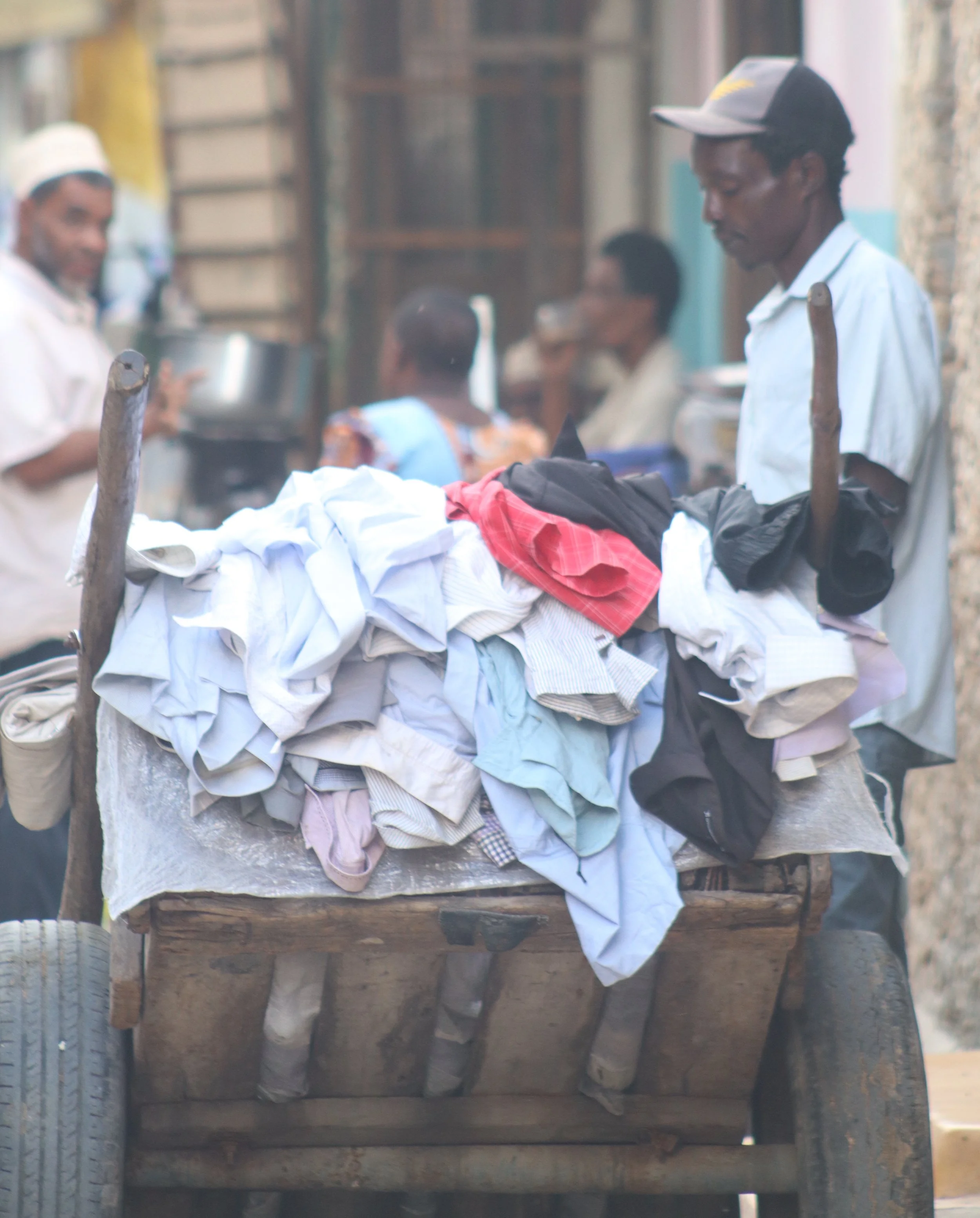Fast Fashion’s Hidden Graveyard: Textile Waste Is Suffocating African Mangroves
In the quiet coastal villages across Lamu, Kenya, we’re finding a new kind of pollution washing up—not plastic bottles or fishing nets, but piles of clothing. Shirts, shoes, bedsheets, and kanzus are becoming an unexpected threat to one of the most vital ecosystems on the planet: the mangroves.
A Shocking Discovery in Lamu’s Mangroves
Recent data from our project funded by CMA CGM in Siyu village paints a concerning picture. Over 76% of waste collected from this critical wetland consists of discarded textiles that are choking marine biodiversity and threatening local livelihoods.
Over the past two years, cleanup operations led by community members in Siyu Village—a settlement of just 2,500 people—have removed more than 68,000 kilograms of wet waste from the mangroves. The majority of it? Fast fashion’s leftovers.
This mirrors findings from macro-litter surveys across the Lamu Archipelago, where we have found large amounts of textile waste in both beach and mangrove ecosystems.
Textiles collected from Siyu’s mangroves hanging out to dry.
Why Mangroves Matter
Lamu County is home to 68% of Kenya’s mangrove forests, making it a biodiversity hotspot with global significance. Mangroves nurture fish species vital for food security, shield coastal communities from storm surges, and are among the world’s most efficient carbon sinks.
But now, these forests are suffocating under the weight of our discarded clothing.
Evidence of a Broken Global System.
“What we're seeing in Lamu’s mangroves isn't just pollution—it’s evidence of a fundamentally broken global system,” said Dipesh Pabari, Co-Founder of the Flipflopi Project. “Fast fashion brands produce clothes designed to be disposable, export the 'affordable solution' of second-hand markets to Africa, then walk away while our communities pay the environmental price.”
The problem begins far from Kenya’s shores. Globally, clothing is being worn fewer times than ever, an average of just 7–10 wears per item, a 36% decline in 15 years (Earth.org). As fashion cycles accelerate, millions of tonnes of unwanted clothing are shipped to Africa through second-hand markets.
Kenya alone imported over 900,000 tonnes of used clothing between 2020 and 2024 (Kenya National Bureau of Statistics, 2025). While much of this trade is marketed as sustainable, a significant portion arrives in poor condition and quickly becomes waste—overwhelming local disposal systems and ending up in waterways and mangroves.
Highlighting the End of a Linear Economy
Judi Wakhungu EGH, Board Member of the Flipflopi Project, draws a direct connection between local realities and global consumption:
“The data from Lamu's mangroves tells a story that extends far beyond Kenya's shores. We're documenting the endpoint of a linear economy that treats Africa as both a market and dumping ground.”
The Hidden Damage Beneath the Surface
Textile waste isn’t just unsightly, it is destroying the ability of them from regenerating. Synthetic fabrics smother the breathing roots (pneumatophores) that mangroves rely on, block crab burrows, and form an impermeable layer that prevents new seedlings from taking root.
Furthermore, as these textiles break down, they release microfibers into coastal waters, contaminating marine life. Local fishermen have reported declining catches and polluted habitats, a sign that the ecosystem is under intense pressure.
Globally, the textile sector accounts for 9% of microplastic losses to the oceans (UNEP), underscoring how deep this issue runs.
Turning Waste into Hope
Despite the scale of the problem, local communities and innovators are not standing still. The Flipflopi team is collaborating with Earth Love, Upendo Women’s Group, Africa Collect Textiles, and ReFACE (Regenerative Fashion Collective Exchange) to explore creative solutions.
Their experiments include upcycling textile waste into accessories and construction materials, proving that circular innovation can thrive at the very frontlines of pollution.
“We're not just cleaning up the mess,” said Pabari. “We are continuing our mission to transform waste into hope while amplifying the voices of frontline communities most affected by pollution. Plastic has diffused into every area of our lives, including what we wear. However, while we continue to innovate on local circular solutions, we need policymakers and producers to address the full lifecycle of synthetic materials, from production to disposal.”
A Call for Global Action
We believe textile waste must be addressed within emerging global environmental frameworks. Current international agreements often focus on conventional plastics, leaving synthetic fabrics that behave just like plastics in wider marine environments out of the conversation.
Lisa Kibutu, CEO of ReFACE, frames it bluntly:
“Plastic textile and fast fashion waste is the new plastic crisis—synthetic fibres are suffocating our planet and silently harming human health. The solution is clear: circular, regenerative fashion that transforms waste into wellness—for people and planet, and where fashion heals instead of harms.”
Time for Change
Fast fashion’s hidden graveyards are no longer confined to landfills—they’re spreading through the lungs of our planet’s coastal ecosystems. From Siyu’s mangroves to cities across the globe, this crisis links our wardrobes to the health of our oceans.
We’re Calling Fo International Frameworks to:
Decrease fast fashion production
Increase textile recycling capacity
Support repair and reuse economies
Address textile waste wherever it accumulates—from urban centers to remote coastlines
Because the true cost of fast fashion isn’t just measured in dollars—it’s measured in the ecosystems that can no longer breathe beneath our discarded clothes.




